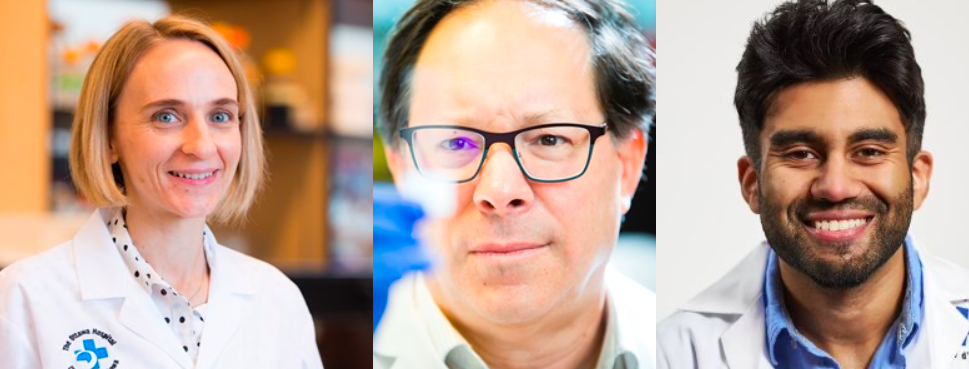
Why We Should Support Organ and Tissue Donation
By: Emile Therien
Proper end of life care should include making the option of organ and tissue donation available to families, at the proper time, and after the family has had time to absorb the unfortunate news and in the appropriate way by a trained, compassionate professional who is not involved in decisions about the treatment of the patient. Proper end of life care provides for a family to decide on consent for donation.
The deceased organ donation rate in Canada, according to experts, is half that of those countries with the best rates including Australia, the United States, and Spain. Spain and the U.S. have 30 to 32 donors for every million people compared to 16 for every million people in Canada.

According to Trillium Gift of Life Network (TGLN), the organ and tissue donation agency of the Ontario Ministry of Health, only twenty-four percent of eligible Ontarians have registered their consent to organ and tissue donation. That despite the fact that organization has made significant efforts and expended huge resources to increase the number of donors in Ontario. And in some of the province’s biggest communities, the rates are lower. Ontario’s situation mirrors that of other provinces.
Since the inception of TGLN in 2002 ,the oldest organ donor in Ontario was 90 years old and the oldest tissue donor was 106 years old. Based on recent data, the average age of deceased Ontario donors is 46 years old and the average age of recipients is 51 years old.
As of December 31, 2013, there were 11,743, 819 health care card holders aged 16 and over in Ontario; there were 2.84 million registered organ and tissue donors.
Transplantation is an important medical procedure . It is viewed by the majority of Canadians as a necessary and important part of our health care system; most expect it will be available to them and their loved ones should the need arise. That said, there is a large gap between support for organ transplantation (more than 95 percent) and willingness to donate (50 to 60 percent). One organ and tissue donor can save up to eight lives and improve as many as 75 others.
“Although everyone of us has the potential to be an organ and/or tissue donor, on average a very small percentage of hospital deaths occur in circumstances that will permit donation”, says Dr. Sonny Dhanani, Chief Medical Officer of Donation for Trillium Gift of Life Network, and Pediatric Intensivist at the Children’s Hospital of Eastern Ontario. Dr. Dhanani says, “it is absolutely critical that in every single situation where donation may be possible, family members are offered the opportunity to honour the wishes of their loved one”.
Dr. Peter Nickerson, medical director, Transplant Manitoba Gift of Life Program and Medical Officer with the Canadian Blood Services, organ and tissue division, argues that organ donation should be established as a routine part of end of life care.
According to the Trillium Gift of Life Network, in this province we lose four out of ten potential donors because the family does not consent to donation when a loved one dies. When families do not consent, they often site ignorance of a love one’s wishes. And yet when someone has registered their wish in Ontario, families consent to donation 90 percent of the time.
It is incumbent, granted it can be a difficult subject to discuss with family, on more Canadians/Ontarians to educate themselves about organ and tissue donation and talk with their families and friends about their wishes and concerns. Public education and awareness are key. Becoming an organ and tissue donor is more than an act charity; simply put, it is the right thing to do! And it is a legacy almost anyone can leave! The need for organ donors has never been greater. Across the country, over 4,000 patients are waiting for transplants. In Ontario, up to the end of January, 2014, the waiting lists for organ transplants totalled 1,546. The large majority were for kidney transplants (1,054), followed by live (249), lung (92), heart (64), kidney-pancreas (54), and pancreas (19). These statistics mirror those of other jurisdictions in Canada. Many are children. Many will die while waiting. In 2011, 2,124 transplants were performed in Canada while 265 Canadians died while waiting.
Establishing organ donation as a routine part of end of life care is a sensible, proven and acceptable practice and will improve donor rates.That said, it is very encouraging that at its’ annual meeting held in May, 2012, the Ontario Medical Association (OMA) announced that it will play a lead role in developing a province wide strategy for end of life care in priority areas such as organ donation. A step in the right direction! According to the OMA, physicians have a great deal of experience, expertise and training in this challenging field of medicine and they have the responsibility to take a leadership role in developing a province wide strategy.
More Canadians are urged to consider organ donation and make their wishes known to their loved ones today. Governments, advocates, and the medical community can only do so much. The record reveals that the experience most families have with organ and tissue in a very powerful and rewarding one.
In Ontario, you can register your consent to donate at: www.beadonor.ca









